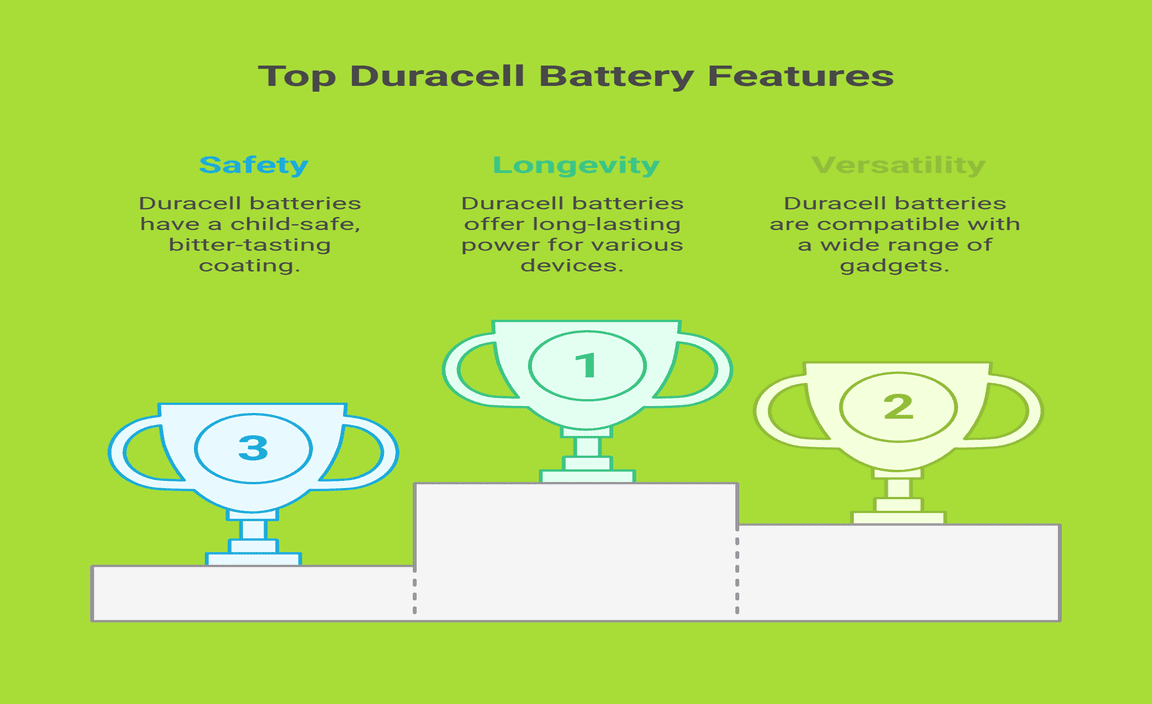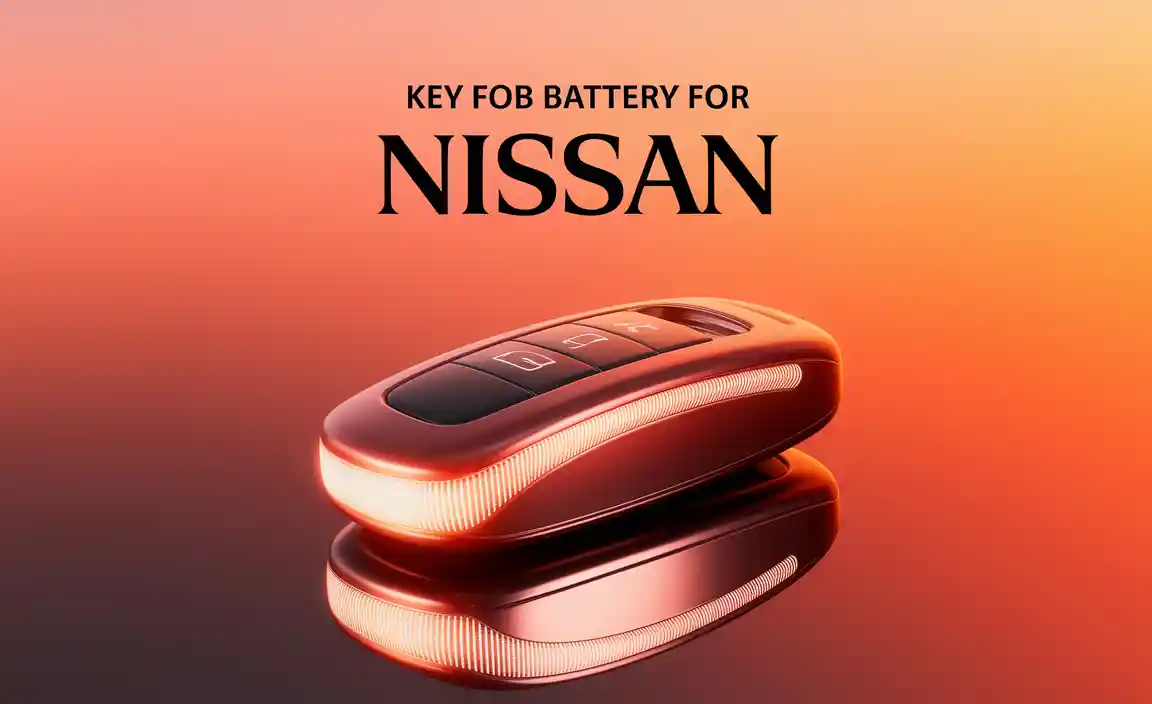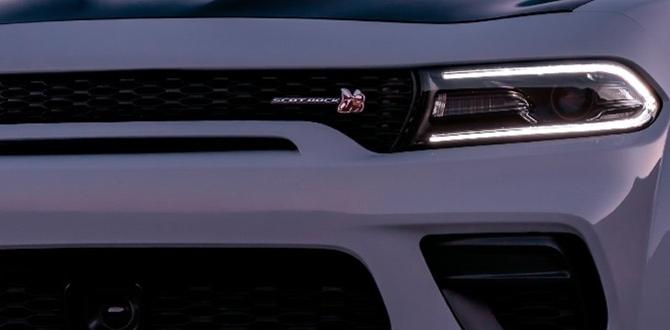Quick Summary: Replacing a car key battery typically costs between $5 and $20 for the battery itself. Professional replacement at a dealership might add $20-$50 for labor, bringing the total to $25-$70. DIY replacement is the most affordable option, often costing just pennies per battery if you buy in bulk.
How Much Is A Battery For A Car Key? Your Essential Guide
Does your car key fob suddenly refuse to unlock your doors? Or perhaps the alarm system won’t disarm? It’s a common, unexpected frustration that can leave you stranded. Before you panic or assume a costly repair, remember that often, the culprit is a simple, inexpensive battery. This guide will walk you through everything you need to know about car key fob battery costs, replacement, and how to keep your key fob powered up and ready to go.
We’ll cover the types of batteries commonly used, how to find the right one, the cost breakdown for parts and labor, and simple steps you can take yourself to save money and time. Let’s dive in and get your key fob working like new!
Understanding Your Car Key Fob Battery
Car key fobs, also known as remote keyless entry systems or transponders, are small but mighty devices. They use a tiny battery to send a signal to your car, allowing you to lock, unlock, start, or even pop the trunk with a simple press of a button. Over time, these batteries drain, just like the battery in your phone or a power bank.
The good news is that replacing these batteries is usually straightforward and much cheaper than replacing the entire fob or dealing with a dead car battery that prevents you from starting your vehicle.
Types of Batteries Used in Car Keys
Most car key fobs use small, round, coin-cell batteries. These are often referred to as “button cell” or “lithium coin cell” batteries. The exact type and size can vary significantly depending on your car’s make, model, and year. You’ll frequently see batteries with designations like CR2032, CR2025, or CR2016. The “CR” signifies a lithium battery, the first two digits indicate the diameter in millimeters, and the last two digits represent the thickness in millimeters.
For example:
- CR2032: 20mm diameter, 3.2mm thick. This is one of the most common types.
- CR2025: 20mm diameter, 2.5mm thick. Slightly thinner than the CR2032.
- CR2016: 20mm diameter, 1.6mm thick. Thinner still, often found in very slim fobs.
Some older or specialized key fobs might use other types, but coin cells are the overwhelming standard for modern vehicles. You can usually find the battery type printed directly on the old battery itself or in your car’s owner’s manual. Don’t guess; always confirm the exact battery type needed!
How Much Does a Car Key Fob Battery Cost?
The cost to replace a car key fob battery can be broken down into a few components: the battery itself, and potential labor costs if you don’t do it yourself. The good news is the battery is the most significant part of the expense, and it’s quite affordable.
Cost of the Battery Itself
When you buy a car key fob battery at a retail store (like a supermarket, drug store, or electronics shop), you can expect to pay anywhere from $5 to $20 for a single battery. Prices can fluctuate based on brand, where you purchase it, and whether it’s a common or slightly rarer type.
However, if you buy a multi-pack from online retailers or wholesale stores, the cost per battery can drop significantly, often to less than $1 each, especially when buying packs of 5, 10, or more. This is a smart move if you have multiple cars or want to have spares on hand.
Cost of Professional Replacement
If you prefer to have your battery replaced by a professional, costs can increase due to labor charges.
- Dealership: A car dealership is usually the most expensive option. They will charge for the battery (often at a markup) plus labor. Expect to pay anywhere from $20 to $50 for the service, bringing the total to $25 to $70 or more, depending on the dealership and your car model.
- Automotive Repair Shop: Independent mechanics can also replace your key fob battery. Their labor rates are typically lower than dealerships, so you might pay around $15 to $40 for the service, plus the cost of the battery.
- Key Cutting/Locksmith Services: Some locksmiths or specialized key cutting shops offer key fob battery replacement. Their prices can be competitive, often falling between $10 and $30 for the service, including the battery.
DIY Replacement Savings
The most budget-friendly way to replace your car key fob battery is to do it yourself. The only cost is the battery itself, which, as mentioned, can be just a few dollars or even less when bought in bulk. This approach is quick, easy, and requires no special tools.
When Should You Replace Your Car Key Fob Battery?
There are a few tell-tale signs that your key fob battery is running low or has completely died:
- Reduced Range: The most common sign is that you have to be much closer to your car for the fob to work. If you once could unlock your doors from across the parking lot and now have to be right next to the driver’s door, the battery is likely weakening.
- Intermittent Functionality: The buttons might work sometimes but not others. You might press unlock, nothing happens, and then press it again a second later, and it works.
- Error Messages or Dashboard Lights: Some modern cars will display a message on the dashboard, like “Key Fob Battery Low” or “Key Battery Weak,” when the battery is nearing the end of its life.
- Complete Failure: Eventually, the fob will stop working altogether. You won’t be able to lock, unlock, or start your car remotely.
It’s also a good idea to proactively replace the battery every 2-3 years as a preventative measure, especially if you drive frequently or rely heavily on your keyless entry system. This can help avoid being caught out with a dead fob.
How to Replace Your Car Key Fob Battery: A Step-by-Step Guide
Replacing your car key fob battery is usually a simple process that doesn’t require advanced technical skills. Here’s how to tackle it:
Step 1: Identify Your Key Fob and Battery Type
First, examine your key fob. Most fobs have a seam running around the edge where the two halves meet. Some may have a small slot or a place where you can see a seam. You might also need to remove a physical key that’s often hidden inside the fob. Gently slide the release mechanism to expose the key, then remove it.
Once you have access to the inside, look for the battery. There might be a part number printed directly on it (e.g., CR2032). If not, refer to your car’s owner’s manual. You can usually find detailed diagrams and specifications for your key fob in the manual. If you don’t have your manual, a quick search online with your car’s year, make, model, and “key fob battery type” will likely give you the answer.
Step 2: Gather Your Tools (If Needed)
For most key fobs, you won’t need many tools. Often, just your fingernail or a small, flat-head screwdriver is enough to carefully pry the fob open. Some fobs might require a small Phillips head screwdriver if they have screws holding them together.
Recommended Tools:
- Small flat-head screwdriver
- Plastic prying tool (to avoid scratching the plastic)
- Small Phillips head screwdriver (if your fob has screws)
- A soft cloth or paper towel
Step 3: Open the Key Fob
If there’s a seam, gently insert the tip of a small flat-head screwdriver or a plastic prying tool into the seam. Twist gently to pry the two halves of the fob apart. Work your way around the seam if necessary. Be patient and careful not to apply too much force, as you could damage the plastic casing or internal components. Some fobs have a specific notch for prying, which is safer to use if you can find it.
If your fob has screws, remove them carefully with the appropriate screwdriver and set them aside in a safe place (a small dish or magnetic tray works well). Then, you should be able to separate the halves.
Step 4: Remove the Old Battery
Once the fob is open, you’ll see the coin-cell battery. It’s usually held in place by a small clip or is simply nestled in a compartment. Use your fingernail or the non-conductive end of your prying tool to gently lift the old battery out. Note the orientation of the battery (which side is facing up) before removing it, as the new one will need to be inserted the same way.
Step 5: Insert the New Battery
Take your new, correct battery. Observe the positive (+) and negative (-) sides. Most coin-cell batteries have the positive (+) side marked with the symbol and is usually the larger, flatter side. Place the new battery into the compartment, ensuring it’s in the same orientation as the old one. It should click or fit snugly into place. Ensure the battery is making good contact with the terminals.
Step 6: Reassemble the Key Fob
Carefully align the two halves of the key fob case and press them together. If your fob had screws, reinsert and tighten them gently. Make sure there are no gaps and that the case is securely snapped shut.
Step 7: Test the Key Fob
Insert the physical key back into the fob if you removed it. Now, test all the functions of your key fob. Try unlocking and locking your car doors, opening the trunk, and if your car has it, try starting the engine while the fob is inside the car. If everything works, congratulations, you’ve successfully replaced your key fob battery!
If it doesn’t work, double-check that the battery is the correct type and orientation, that it’s seated properly, and that the fob is fully reassembled. Sometimes, a faulty new battery can also be the cause.
Car Key Battery vs. Car’s Main Battery: What’s the Difference?
It’s important to distinguish between your car key fob battery and your car’s main battery. They are completely different systems with different purposes and costs.
Car Key Fob Battery:
- Small, coin-cell lithium battery.
- Powers the remote functions of your key (locking, unlocking, alarm).
- Costs $5-$20 for the battery; DIY friendly.
- Failure means your remote functions won’t work.
Car’s Main Battery (Automotive Battery):
- Large, heavy lead-acid battery, usually under the hood.
- Provides the massive electrical power needed to start the engine and run the car’s electrical systems (lights, radio, AC, etc.).
- Costs $100-$300+ for the battery; replacement can be done DIY but is more involved and sometimes requires special tools.
- Failure means your car likely won’t start or will have serious electrical issues.
Understanding this difference is crucial. A dead key fob battery won’t prevent your car from starting, but a dead car battery will. Always be clear about which battery you are referring to!
Where to Buy Car Key Fob Batteries
You have several options for purchasing replacement batteries for your car key fob, each with its own pros and cons:
1. Automotive Dealerships:
- Pros: Guaranteed to have the exact correct battery for your specific key fob. Can often replace it for you.
- Cons: Typically the most expensive option, both for the battery and any service fee.
2. Auto Parts Stores (e.g., AutoZone, O’Reilly Auto Parts, Advance Auto Parts):
- Pros: Convenient, readily available, often knowledgeable staff, competitive pricing on common batteries.
- Cons: Selection might be limited for very specific or older car models.
3. Electronics Stores (e.g., Best Buy, Batteries Plus Bulbs):
- Pros: Wide variety of coin cell batteries, knowledgeable staff about battery types. Batteries Plus Bulbs often excels here.
- Cons: Prices can be higher for single batteries compared to online retailers.
4. Supermarkets and Drug Stores (e.g., Walmart, Target, CVS, Walgreens):
- Pros: Very convenient for quick replacements, especially common types.
- Cons: Limited selection, often higher prices per battery, staff may not be battery experts.
5. Online Retailers (e.g., Amazon, eBay):
- Pros: Often the cheapest option, especially when buying multi-packs. Huge selection to find almost any battery type. Convenient home delivery.
- Cons: You need to know the exact battery type beforehand. Shipping times can vary. Quality can sometimes be inconsistent from third-party sellers.
Here is a quick comparison of typical pricing:
| Retailer Type | Typical Single Battery Cost | Typical Multi-pack (5-10) Cost per Battery | Notes |
|---|---|---|---|
| Dealership | $10 – $25 | N/A | May include installation |
| Auto Parts Store | $5 – $15 | $2 – $5 | Good availability |
| Electronics Store | $6 – $18 | $3 – $7 | Specialty battery shops are great resources |
| Supermarket/Drug Store | $7 – $20 | N/A | Limited selection, higher price |
| Online Retailer | $1 – $5 | $0.50 – $2 | Best for bulk savings, know your battery type |
For the most cost-effective solution, especially if you have multiple key fobs or cars, buying a multi-pack of the correct battery type from Amazon or a wholesale store online is usually the best bet. You can often find reputable brands like Energizer or Duracell.
Safety Tips for Battery Replacement
While replacing your car key fob battery is generally safe, it’s good to follow a few precautions to ensure you don’t damage the fob or injure yourself.
- Handle Batteries Carefully: Avoid bending, crushing, or puncturing the battery. They contain chemicals that can be harmful if exposed.
- Keep Batteries Away from Children and Pets: Coin-cell batteries are particularly dangerous if swallowed, as they can cause severe internal burns. Store new and used batteries out of reach. If you suspect a battery has been swallowed, seek immediate medical attention. The Nationwide Poison Control website has crucial information on this.
- Use the Correct Battery Type: Installing the wrong size or type of battery can damage the fob’s electronics or prevent it from working correctly.
- Note Polarity: Always ensure the new battery is inserted with the correct positive (+) and negative (-) terminals facing the right way. Incorrect placement will prevent the fob from powering up.
- Be Gentle with the Fob: When prying open the fob, use minimal force and gentle movements to avoid cracking the plastic or dislodging delicate internal components. A plastic prying tool is often safer than a metal screwdriver.
- Work in a Well-Lit Area: This helps you see clearly what you are doing and prevents small parts from getting lost.
- Consider a Battery Discharge Step (for some older fobs): After replacing the battery and before reassembling, some sources suggest pressing all the buttons on the fob for a few seconds to discharge any residual power. This can sometimes help reset the fob and ensure proper function, though it’s not always necessary.
Frequently Asked Questions (FAQ)
How long does a car key fob battery typically last?
A car key fob battery usually lasts between 2 to 5 years, depending on how often the fob is used and the



